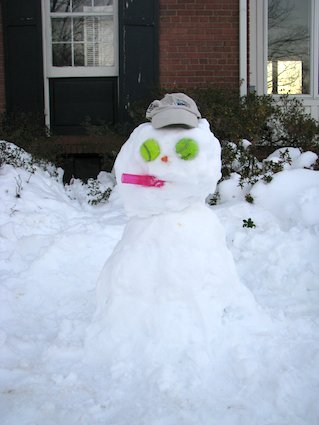It’s Christmas and I’m not likely to greet many visitors on Twelve Mile Circle today. Nonetheless I thought I’d post something quirky but topical. Consider this a little gift for those of you who did decided to spend some quality time on the web today. Well, between attending church, opening presents, and pursuing holiday cheer, of course.
An Unusual Occurrence
We’re having one of those rather rare events in Northern Virginia, a true White Christmas. It doesn’t happen very often, and in fact I can’t remember the last time it did. Nonetheless, we have snow on the ground on Christmas day. Here is the evidence.

Actually I took this photo yesterday evening, Christmas Eve. However it’s still dark outside and this will have to suffice. Trust me, the snow did not melt overnight. We’re supposed to have lots of cold rain this afternoon so I need to enjoy it while it lasts.
How Often Does it Happen?
I started wondering about the probability of a White Christmas. Unbelievably, someone created a Wikipedia page devoted to this very topic. They define a White Christmas as one with snow on the ground.
In other words it doesn’t actually have to snow on Christmas day. It’s fine if unmelted snow from a prior event remains on the ground. I also love that in the United Kingdom,
“…for the purposes of betting, a Christmas is considered ‘white’ if a single snow flake is observed falling onto the roof of the London Weather Centre in the 24 hours of 25 December, even without a perceivable quantity of snow.”
I’m not sure why that amused me so much.
The page includes a chart of probabilities for several cities in the United States, Canada and the United Kingdom. It even links to a great map published by the National Weather Service showing White Christmas probabilities throughout the Lower 48. This is my new favorite map for the week.

I learned that my hometown has an annual probability of about 13%. So it’s an unusual phenomenon but not nearly as rare as I imagined. It’s on a par with Vancouver, BC and Bradford, England.
Now go spend some time with your family.

Leave a Reply